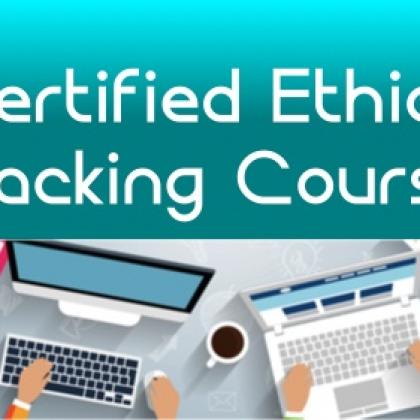Predictive Modeling Training
by EDUCBA
This lesson is E-learning lesson.
About the Class
- Class Level: Beginner
- Age Requirement: 15 to 99 years
What You'll Learn
Predictive Modeling Course Description
Section 1: Introduction
What is Predictive Modeling
Predictive analytics is an emerging strategy across many business sectors and they are used to improve the performance of the companies. Predictive modelling is a part of predictive analytics which is used to create a statistical model to predict the future behaviour. The predictive modelling can be used on any type of event regardless of its occurrence. The predictive model to be used for a particular situation is often selected on the basis of the detection theory. This chapter includes an overview of predictive analytics and predictive modelling. This chapter also includes examples of predictive modelling.
How to Build a Predictive Model
The predictive models are used to analyze the past performance to predict the future results. There are several steps involved in building a predictive model
Pre-Processing
Data Mining
Results validation
Understand business and data
Prepare data
Model data
Evaluation
Deployment
Monitor and improve
All these steps are explained in detail under this chapter
Section 2: Variables
Types of Variables
There are different types of variables in predictive modelling. They are Predicator Variable, Numeric variable, ID variable, Factor variable, categorical variable, extraneous variable, confounding variable and Target Variable.
Difference Between Variables
The difference between each variable is explained in this chapter.
Other Types – Extraneous Variables
Extraneous variables are the ones that are not included in your test or experiment by you but it affects your experiment when you run your experiment. For example, if you are running an experiment to find out whether one variable has an effect on the other variable but unfortunately you find another variable that is affecting the result of your outcome. These undesired variables are called extraneous variables.
Section 3: Steps Included
How to Build a Predictive Model Steps
This chapter contains the basic seven steps involved in predictive modelling
Defining the objective – This section deals with the ways to define the objective of predictive models with relation to the goals of the business.
Gathering the data -Collecting data from various sources is another important step in building a predictive model. Examples are provided for the collection of different types of data from various sources.
Preparing the data for modelling – This section deals with the segregation of data and how determines how they can be used in predictive modelling.
Selecting and transforming the variables – This topic deals with the steps for the transformation of independent variables to best fit the dependent variable.
Processing and evaluating the model – In this chapter, you will go through several methods of processing and evaluating the model
Validating the model – The predictive models should perform well on the data. This chapter deals with three powerful methods for ensuring the model fit.
Implementing and maintaining the model – Effective implementation of the Predictive model is another important step. This chapter discusses various auditing procedures and model maintenance practices
Algorithms
Algorithms perform data mining and statistical analysis to find out the trends in data. The predictive analytics has few built-in algorithms like regression, time series, outliers, decision trees, k means and neural network.
Forecasting Methods
The forecasting methods used depend mainly on the type of data available. There are different methods of forecasting which are discussed in detail in this lesson
Qualitative Forecasting
Quantitative forecasting
Cross-sectional forecasting
Time Series Forecasting
What is Time Series
Time series algorithms are used to perform time-based predictions. The examples are smoothing methods which are discussed in the next chapter.
Time series data are used to forecast something that is constantly changing over time like profit, share price and others. Forecasting the time series data will help to predict the sequence of observations in the future.
Section 4: Smoothing Methods
Smoothing Methods – Moving Averages
In moving average smoothing each observation is assigned an equal weight and each observation is forecasted using the average of the previous observations. This method is useful when the item to be forecasted remains unchanged over time. The formula for moving average method is also explained in this chapter.
Smoothing Methods – Double Exponential Smoothing
Exponential smoothing is one of the successful and most widely used forecasting methods. The forecasts that are produced using exponential smoothing methods are weighted averages of the previous observations. There are two types of exponential smoothing – Simple Exponential Smoothing and Double Exponential Smoothing.
Double exponential smoothing is the recursive application of an exponential filter twice in a time series. This should not be used if the data is expected to be affected by seasonality. This is used only when a trend in inherent in the dataset. The double exponential smoothing is explained in detail in this chapter with its formula and examples.
Section 5: Regression Algorithms
Regression Algorithms – Exponential
There are different types of statistical, data mining and machine learning algorithms in Predictive Modeling. Each algorithm is used to address the specific needs of the business concern. So choosing the right algorithm for your business is a great task. Regression algorithm is one among them. Regression algorithm is used to forecast continuous data like credit scoring or predicting the next outcome of a time-based event. For example, regression algorithm can be used to predict the trend of a stock movement with its past prices.
There are seven types of regression which are explained in detail in this chapter. In predictive modelling, linear and logistic regressions are considered to be the most important ones.
Linear Regression
Logistic Regression
Polynomial Regression
Stepwise Regression
Ridge Regression
Lasso Regression
ElasticNet Regression
This chapter also lets you learn how to select the right regression model for your business.
Section 6: Clustering Algorithms
Clustering Algorithms – Definition
Clustering can be defined as the division of data into groups of similar objects. The clustering technique is not used to predict the value of the target variable in clustering. The clustering algorithm is used to segment the whole data into homogeneous clusters. For example, clustering is used for customer segmentation. This algorithm segments the customers based on more variables which can never be done by humans. To make a clustering algorithm perfect, there should be more similarity within the clusters and more differences between the clusters. There is a different type of clusters and each is explained in detail in this chapter.
Clustering Algorithms – Fuzzy C Means Clustering
Fuzzy C Means Clustering is one of the widely used clustering algorithms. This is a method of clustering which lets a single data to be present in two or more clusters. This algorithm is mostly used in pattern recognition. This algorithm is used for analysis based on the distance between various input data points. The formula for Fuzzy C Means Clustering is explained in this chapter. Here you will also learn about the algorithm steps of Fuzzy C Means Clustering. This chapter also contains the comparative study of K means Cluster algorithm and Fuzzy C Means Cluster algorithm.
Section 7: Neural Network Algorithm
Neural Network Algorithm
The neural network algorithm is used for pattern recognition, find out the predictions and learn from the result. An example of a neural network is the human brain. Neural networks in data mining apply pattern recognition and machine learning algorithms to build predictive models. This chapter explains the two main components of the neural network algorithm – Nodes and Links. Nodes are artificial neurons and Links are the components which connect these nodes. The other topics included in this chapter are
Kohonen Neural Network
Steps of algorithm of learning the neural network
Case studies
Section 8: Support Vector Machines
Support Vector Machines
Support Vector Machine (SVM) is a supervised machine learning algorithm which is used for analyzing data for classification and regression categories. But this algorithm is mostly used in classification problems. The advantages of SVM are it can be effectively used in high dimensional spaces and it is also memory efficient. The SVM is also versatile and different kernels can be used here. The main disadvantage of SVM is that it produces poor performance if the number of features is more than the number of samples. The other topics included in this section are listed below
Linear Support Vector Machines
Non Linear SVM
Basics of Support Vector Machines
Calculating the SVM classifier
How is the optimal hyperplane calculated
How to implement SVM in Python
Source code and Explanation
Tuning the parameters of SVM
Support Vector Regression
Pros and Cons of Support Vector Machines
Practice problem and Case Studies
Fee Includes
Lifetime Access to eLearning content
Why Book Through LessonsGoWhere?
- Booking is safe. When you book with us, your details are protected by a secure connection.
- Secure your slot instantly. Book classes with us and your seat is confirmed immediately.
- Earn Reward Points. This class will earn you upto 60 reward points. Points can be used for a discount off your next class!
Questions about this class?
Get help from knowledgeable expert.
Together with eduCBA, we bring you an amazing course on Predictive Modeling Training.
Predictive Modeling Training
What is Predictive Modeling
Predictive modelling is the process of creating, testing and validating a model. It uses statistics to predict the outcomes. Predictive modelling has different methods like machine learning, artificial intelligence and others. This model is made up of a number of predictors which are likely to affect the future results. Predictive modelling is most widely used in information technology.
Uses of Predictive Modeling
Predictive modelling is the most commonly used statistical technique to predict the future behaviour. Predictive modelling analyzes the past performance to predict the future behaviour.
Features in Predictive Modeling
Data Analysis and Manipulation
Visualization
Statistics
Hypothesis Testing
Pre requisites for taking this course
The pre requisites for this course includes a basic statistical knowledge and details on software like SPSS or SAS or STATA.
Target Audience for this course
This course is more suitable for students or researchers who are interested in learning about predictive analytics.
Predictive Modeling Course Objectives
After the completion of this course you will be able to
Understand how to use predictive analytics tools to solve real time business problems
Learn about predictive models like regression, clustering and others
Use predictive analytics techniques to interpret model outputs
All e-learning lessons bought through LGW will be final and no refund, return, cancellation or exchange will be allowed.
Frequently Asked Questions 
Have a question about LessonsGoWhere? We've collected all your questions and our answers into a convenient list here. If you have any questions, please don't hesitate to email us at info@lessonsgowhere.com.sg
Q: What's LessonsGoWhere?
A: LessonsGoWhere.com.sg (LGW) is Singapore's first online marketplace to list, discover and book in-person courses. You can shop, compare and review lessons on LGW, across areas like Baking, Cooking, Music, Fitness, Yoga and even Exotic lessons!
Q: Are the classes I find on LessonsGoWhere online lessons or are they conducted in real life?
A: All the classes you can find on LessonsGoWhere are lessons that are conducted in real life, by real people. We sincerely believe in the importance of the human touch and that we can build bonds and relationships through shared passions. Would you like to learn SCUBA diving through an online tutorial? We didn't think so.
Q: Who are the teachers in the classes available on LessonsGoWhere?
A: The classes on LessonsGoWhere are taught by professional trainers, instructors, chefs and coaches, as well as passionate individuals who want to share their experience and knowledge. LessonsGoWhere does not restrict lessons from freelancers or other qualified individuals. However, we are very strict on the quality of lessons and if we receive complaints regarding the quality of the lessons from our users, we will not hesitate to take action in removing the lessons and banning the lesson provider.
Q: What types of lessons are offered on LessonsGoWhere?
A: There are a wide range of lessons on various topics and areas of interest on LGW. The main categories right now are Baking, Cooking, Music, Sports, Art, Yoga and Exotic lessons. However, we are always looking out for more lessons to add to the marketplace. If there's a particular category of lessons you'd like to see, please don't hesitate to let us know at info@lessonsgowhere.com.sg
Q: Are the lessons real? Will I get scammed if I book classes on LGW?
A: The lessons are definitely real. All lessons are uploaded and checked by a team of hardworking elves (the founders of LGW) who work tirelessly and through late nights to ensure that the details are accurate. All lesson providers are also contracted with LGW to provide the lessons. We back our lessons up with a 100% Refund Policy. In the scenario that a lesson is cancelled, we GUARANTEE that we will refund you 100% of the fess paid. The security of our customers is our number 1 priority. If you have any queries on the lessons or the security of the website, do not hesitate to email us at info@lessonsgowhere.com.sg
Q: Why do I need to pay immediately?
A: We require that you pay for the lesson in full before you are issued an email confirmation of your booking for the lessons. There will be costs incurred by the instructor before the lesson commences, and your payment not only immediately confirms your booking, but will enable us to pay the lesson provider immediately!
Q: Why should I book and pay for my lessons on LessonsGoWhere.com.sg?
A: In cases of disagreement between you and the lesson provider, LGW will have a copy of your booking details logged with us and can also withhold payment from the lesson provider. Your booking details will be helpful should any disputes arise in terms of bookings and payments. Also, with the wide variety of lessons on LGW, you can immediate compare and choose your choice of classes at your convenience! You can also contribute to the community by reviewing the classes and lessons you've attended, earning you Reward Points, and also helping potential students make better choices and their reviews will benefit you too!
Q: What happens after I've made payment?
A: Once you've confirmed payment for the lessons of your choice, you will receive an email confirmation from us, letting you know the date, time and location of the lesson. On the day itself, simply present the email confirmation to the lesson provider and you will be able to attend the lesson!
Q: What happens if I cannot attend the lesson?
A: In the case that after you have booked your lesson, but are unable to attend, let us know immediately. Email us at info@lessonsgowhere.com.sg. We will try our best to transfer your booking to another time, or if you prefer, to a friend. While we cannot refund your payment if you are unable to attend, let us know and we will try out best to accommodate you!
Q: What if the lesson provider asks for more money when I arrive?
A: The pricing information for each lesson is clearly stated on each listing and will also note what is or is not included. If you encounter a lesson provider who asks for more money on top of the payment you have already made to us, please contact us immediately at info@lessonsgowhere.com.sg and we will try our best to rectify the situation.
Q: Do the fees include equipment and location rentals (if necessary)?
A: While some lesson providers will include equipment and facility bookings with the fee, others might not. Don't worry though, the pricing information is clearly stated on each listing and will also note what is or is not included. If you are still in doubt after checking the listing, you can email us at info@lessonsgowhere.com.sg and we will clarify the issue for you.
Q: What happens if I pay for a lesson and the lesson provider cancels or doesn't respond?
A: Don't worry! If the lesson is cancelled or if you are unable to get a response from the lesson provider, email us at info@lessonsgowhere.com.sg and we will refund you 100% of the fees you paid.
Q: My friend/girlfriend/boyfriend/family member wishes to attend the lesson as well, can I book for them too?
A: Yes! Learning is always an experience best shared. It's also a great activity to bond over! If you have others who are interested in attending the lesson as well, simply book the appropriate number of slots for the lesson and they can accompany you. Book fast though! Most lessons only have a limited number of slots available and if you aren't fast enough, you might not be able to secure the slots for them!
Q: Should I leave a review after I've attended the lesson?
A: Definitely! Not only do other students benefit from your review of the lesson, you will also receive Reward Points for your review! You can use those Reward Points as a discount off your future lessons too! Everyone benefits!
Q: Are the reviews posted on LGW true?
A: Each review posted on LGW will be monitored by our administration team. We try our best to create a helpful and engaging community and we do not like foul language, sexual themes, trolls or spammers. But yes, all reviews are unedited by us and are the opinions of the reviewer.
Q: Are you Baking and Cooking courses Halal certified?
A: Halal certification is a type of certification given only to restaurants. Most of our classes use pork free ingredients. For more information, please get in touch with us to find out more!
Found the answer to your questions? Book your lesson now!
Ready to take this class?
Reviews of Classes by EDUCBA
Heow P.
15 Mar, 2021
Andy K.
8 Jun, 2020
poor in presentation & speech
Wei Tian Edwin Y.
4 Jun, 2020
Wei Tian Edwin Y.
4 Jun, 2020
Anand K.
12 Apr, 2017



